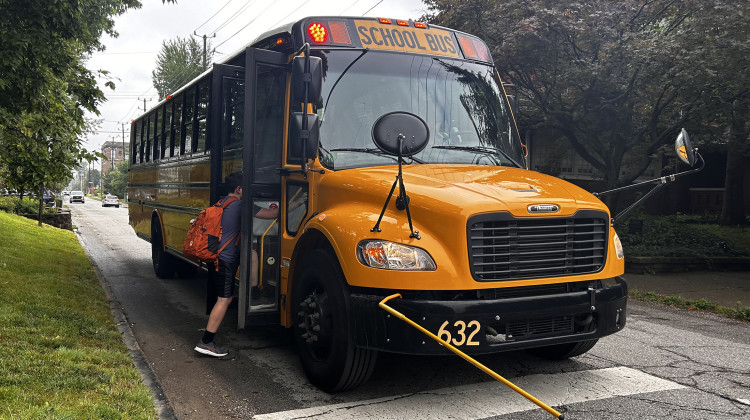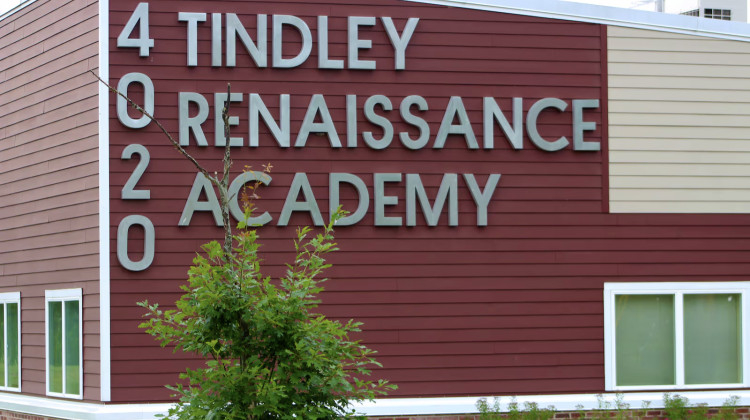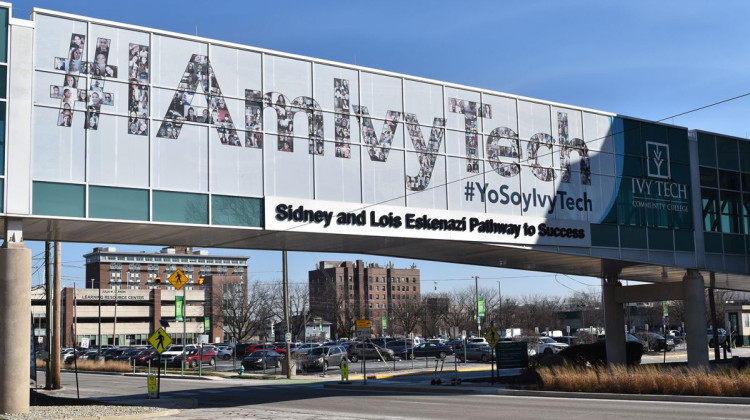Indianapolis Public Schools leaders are divided about the state of equity in district schools following the first three stories in a series on school segregation from Chalkbeat, the Indianapolis Star and WFYI.
Stories so far have chronicled how the end of a court-ordered desegregation busing program has had a mixed legacy that has led to more segregated schools in some parts of the city; examined ways magnet schools might have contributed to segregation within IPS; and highlighted the way intentional plans for integration at an inner-city Christian school have brought kids together.
In a letter to the Star responding to the story about IPS magnet schools, Superintendent Lewis Ferebee and School Board President Mary Ann Sullivan wrote that “there is no ‘plan’ to keep affluent or white families in our district.” The pair said the district is responding to demand for more career and vocational, language immersion and STEM programs.
“Our flexible strategic planning model is designed to help us meet our community’s specialized demands,” Ferebee and Sullivan wrote.
But in conversations with Chalkbeat reporters and at community meetings, educators and parents have raised concerns about how some of IPS’s most sought-after magnet schools serve largely white and affluent student bodies compared to other district schools.
Ferebee and Sullivan argue that the story did not present a full picture of IPS, where there are many high-performing schools serving largely black and Hispanic students. Of the 66 district schools that earned ratings from the state in 2015, 24 earned A or B grades. Many of those schools were neighborhood schools, and 20 had more than 51 percent minority enrollment.
On Facebook, school board member Kelly Bentley also pointed out high-scoring, diverse magnet schools in the district, including School 91 (a Montessori magnet that is 43 percent white, 34 percent black, 14 percent Hispanic and 8 percent multiracial).
“The Star stated that ‘School 84 is a rare haven of excellence’ and that statement is simply not true,” she wrote. “Just as it isn’t true that IPS doesn’t have any successful, diverse schools.”
A story in the series focused on School 84 as one of only a small number in the district that offers the academically rigorous International Baccalaureate curriculum, but which also serves very few black and Hispanic students. The school is 83 percent white, while districtwide just 20 percent of IPS enrollment is made up of white students.
In a blog post, school board member Gayle Cosby offered a starkly different view from Bentley: She argued that the district is not living up to its commitment to promote diversity through how students are assigned to schools.
“The bottom line is this — either — IPS intends to achieve diverse school settings or it does not,” she wrote.
Cosby pointed to the third story in the series — which covered the Oaks Academy, a diverse Christian school in Indianapolis — as an example of the value of integration.
“Sure, they are private — but I don’t think that matters here,” she wrote. “What matters is the emphasis and intentional action that they put toward establishing that diversity.”
Cosby highlighted the unusually high proportion of white students at three of the district’s magnet schools: School 84, School 2 (both Center for Inquiry schools) and School 60 (the Butler University lab school).
All three schools had significantly higher numbers of black students in the past, according to state data. That change led Cosby to raise a bleak possibility — that increasingly segregated schools will help draw white families back into the urban core of Indianapolis.
“The desegregation of the public educational system was the driving force behind white flight from Indy,” she wrote. “Will a segregated Indianapolis school system be the key to attracting white families back to Indianapolis?”
Chalkbeat is a nonprofit news site covering educational change in public schools.
 DONATE
DONATE







 Support WFYI. We can't do it without you.
Support WFYI. We can't do it without you.